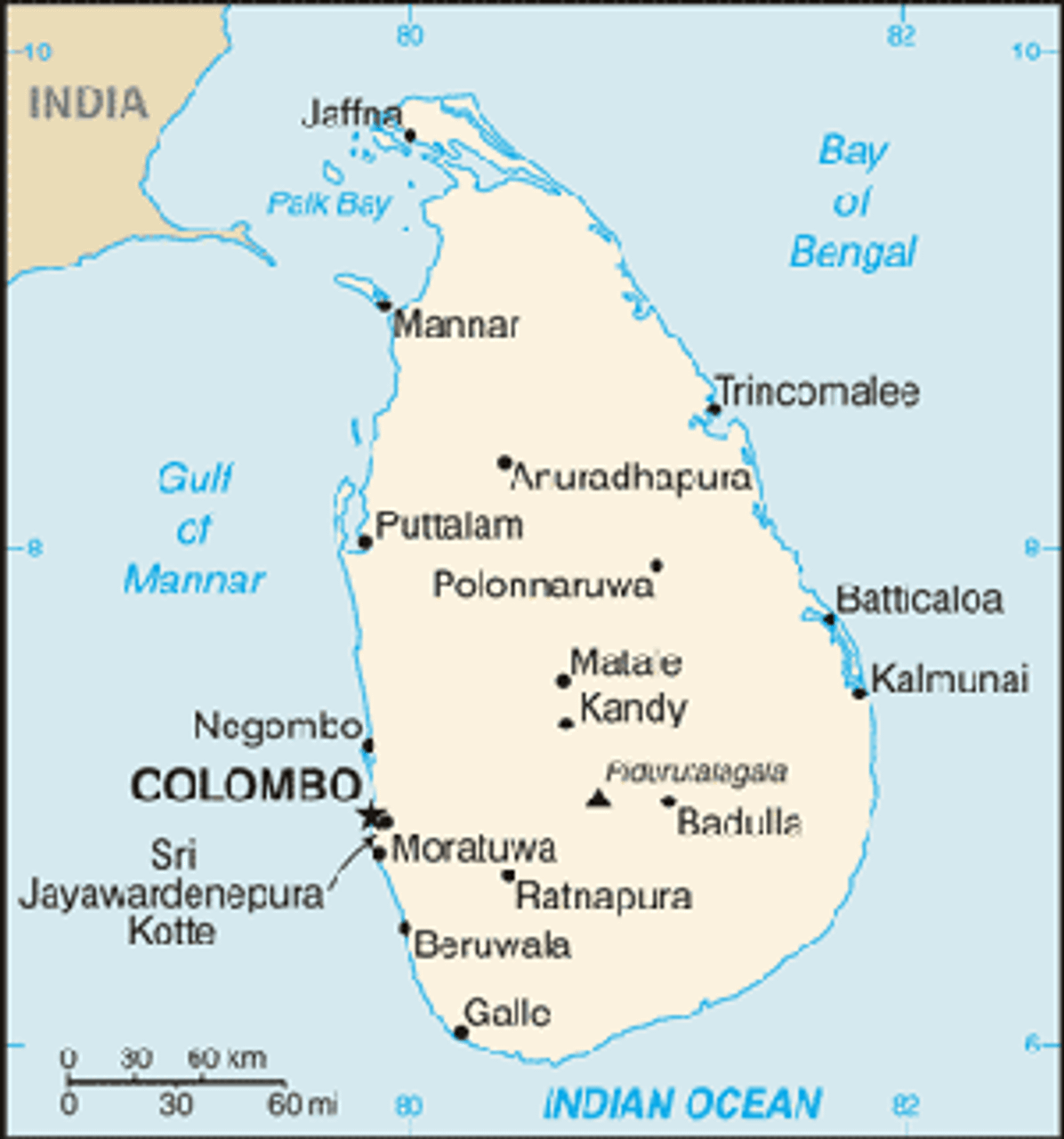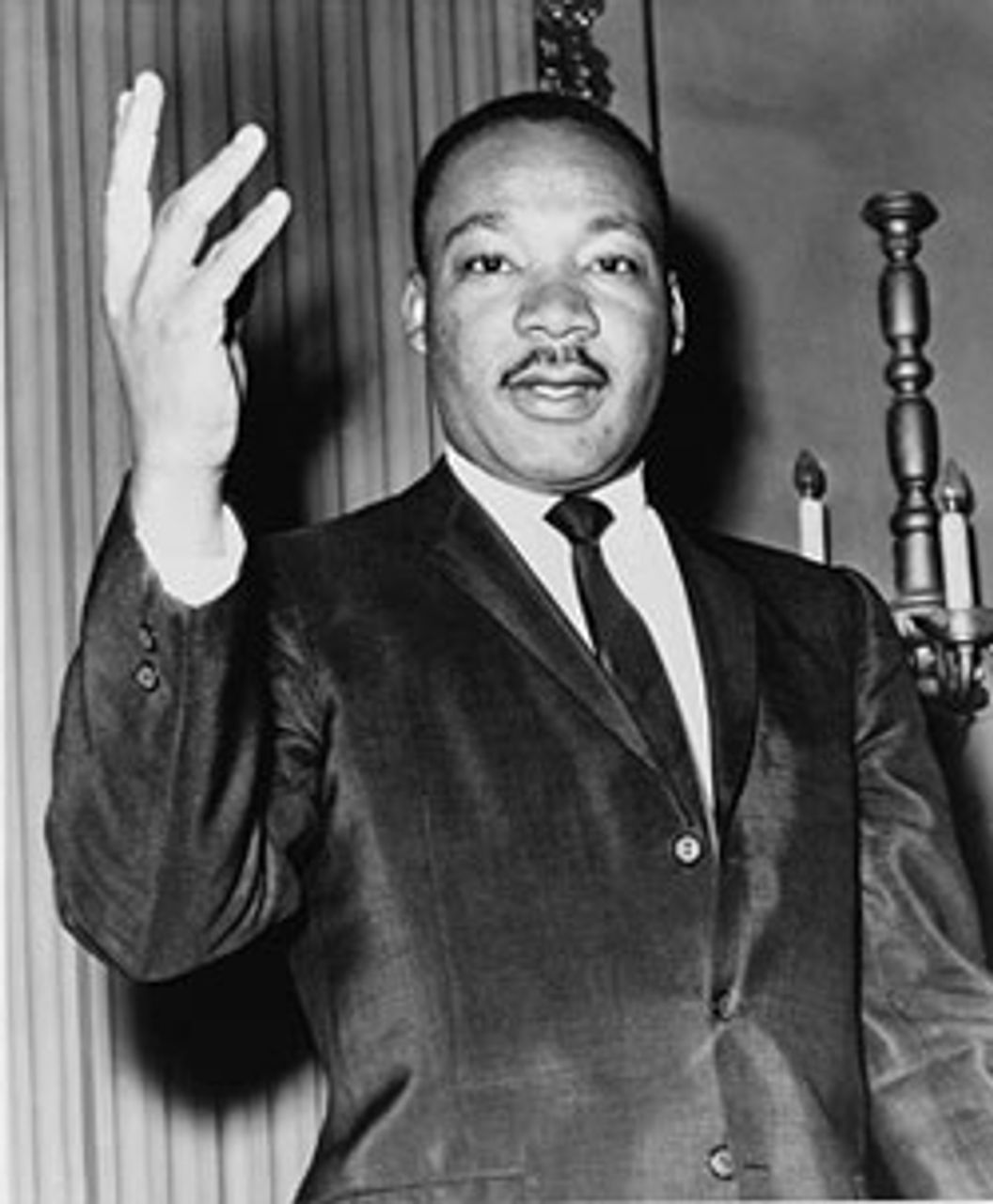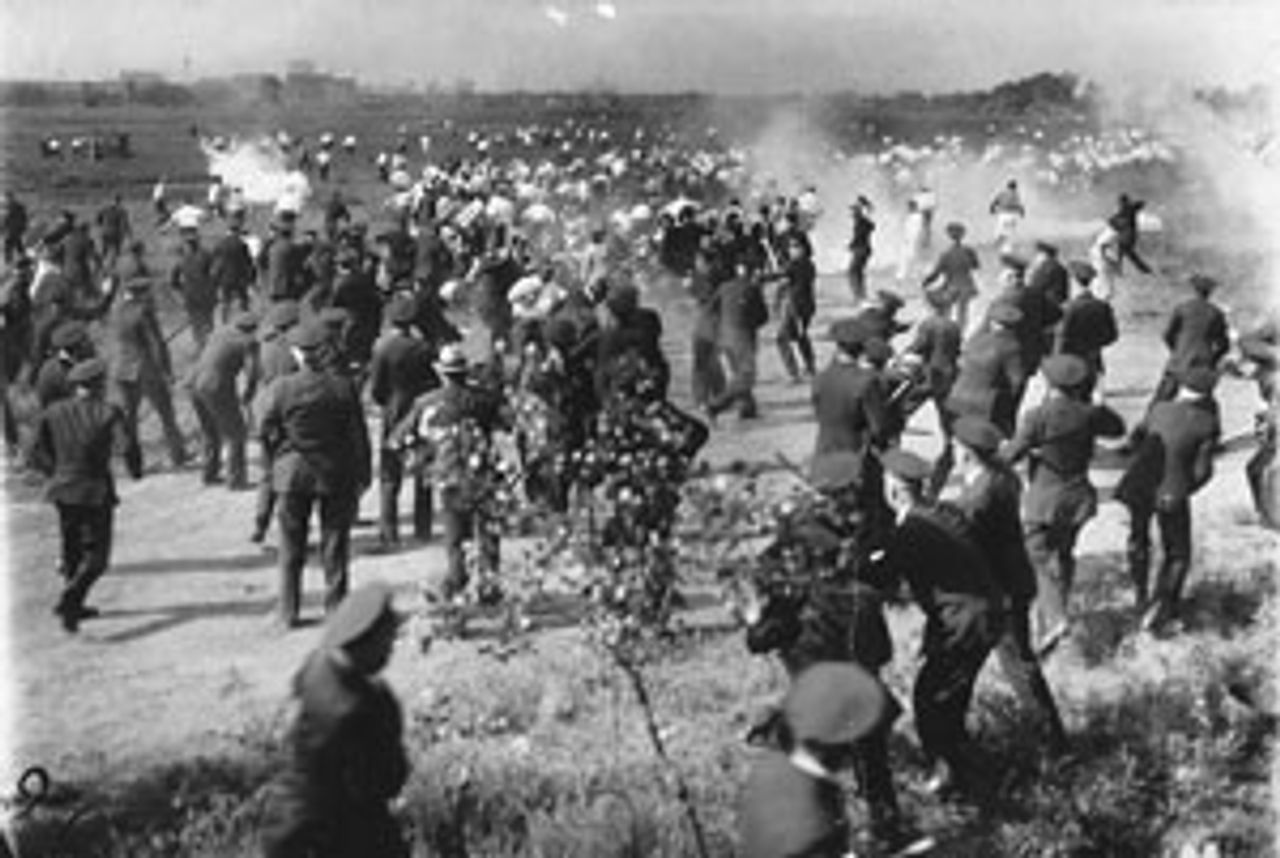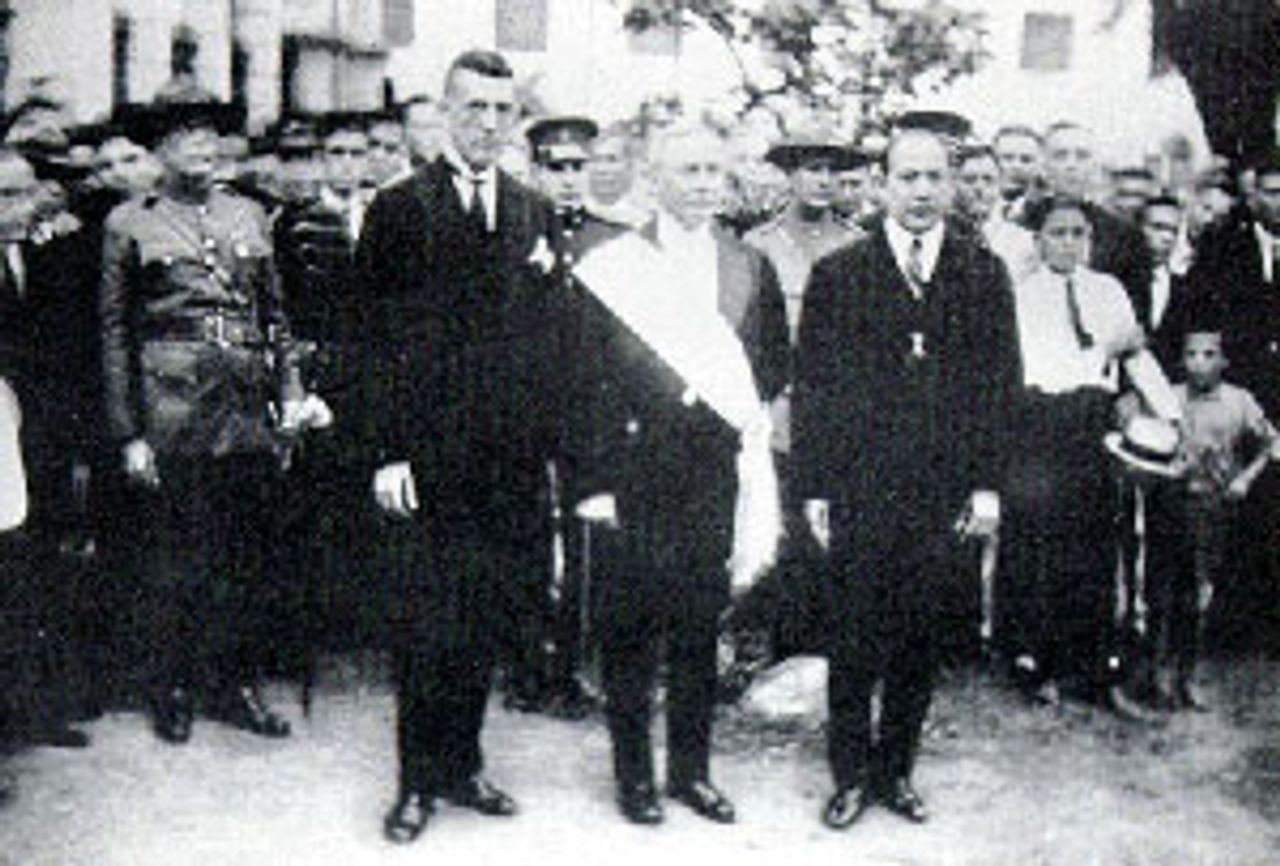This Week in History provides brief synopses of important historical events whose anniversaries fall this week.
25 Years Ago | 50 Years Ago | 75 Years Ago | 100 Years Ago
25 years ago: Sri Lanka signs pact to use Indian troops against Tamil separatists
 Indian Prime Minister Rajiv Gandhi and Sri Lankan President J.R. Jayawardene signed the Indo-Lanka Accord on July 29, 1987 in Sri Lanka’s riot-torn capital city of Colombo. News of the impending agreement with India had provoked two days of violence, in which 40 died. Indian military aircraft were employed to transport 600 Sri Lankan soldiers from the northern province of Jaffna to patrol the city’s streets. A round-the-clock curfew was put in place to clear the streets.
Indian Prime Minister Rajiv Gandhi and Sri Lankan President J.R. Jayawardene signed the Indo-Lanka Accord on July 29, 1987 in Sri Lanka’s riot-torn capital city of Colombo. News of the impending agreement with India had provoked two days of violence, in which 40 died. Indian military aircraft were employed to transport 600 Sri Lankan soldiers from the northern province of Jaffna to patrol the city’s streets. A round-the-clock curfew was put in place to clear the streets.
Racist politicians and Buddhist monks led violent street demonstrations in the capital city, torching government buildings and attacking police stations. These right-wing forces used opposition to the pact to arouse a new wave of chauvinism within middle-class and lumpen elements of the population.
A preliminary force of 1,500 Indian troops landed at in Jaffna the same day, to begin the “peacekeeping” mission designed to end the four-year-long civil war, in which 6,000 had been killed. The desperate Jayawardene regime moved to utilize the more powerful armed forces of India in a bid to neutralize the Tamil separatists, let by the Liberation Tigers of Tamil-Elam (LTTE).
The LTTE, whose leader Velupillai Prabhakaran had been abducted by Indian forces, opposed the pact. In a statement published in Sri Lankan newspapers the day prior to the signing, the LTTE called the pact “an attempt to disarm and enslave us.” Indeed, the two powers aimed to crush the Tamil liberation struggle, which threatened to upset the political framework established by imperialism in the 1947 carve-up of the South Asian subcontinent.
Within weeks of the signing of the deal, 10,000 Indian troops were brought into Sri Lanka’s northern and eastern provinces. Under the “peacekeeping” accord Tamil fighters were expected to turn over their arms. Other provisions of the pact included the deportation to Sri Lanka of 125,000 Tamil refugees who had fled to the southern Indian state of Madras, and the heavy patrolling of the Palk Strait, the body of water between southern India and the northern region of the island country.
Despite its previous hopes for support from India, the LTTE pledged defiance of the terms, and vowed to continue the armed struggle.
50 years ago: Blacks struggle for civil rights in Georgia
 Martin Luther King, Jr.
Martin Luther King, Jr.On July 24, 1962, police in Albany, Georgia, broke up a demonstration of about 2,000 blacks protesting the city’s system of legal segregation and against a ban on public gatherings. Protesters hurled bricks, bottles, and rocks at police, injuring one officer. The media did not report the far more numerous injuries among the demonstrators.
The police attack was only the bloodiest of a series of incidents that week in Georgia. On July 25, a 20-year-old black man, Frank Dumas, Jr., was sentenced to life in prison by an all-white jury for the killing of a white youth, Leslie Lee Luttes. Luttes and friends had been driving through a black neighborhood in Augusta, during a period of racial tension the previous April. The primary evidence against Dumas was provided by a witness who was not at the scenes of the crime and who said, in unsworn testimony, that lawmen had forced him to implicate Dumas.
On July 26, lawmen in Terrell County, Georgia, attempted to intimidate a voting rights rally of several dozen blacks. Sherriff Z.T. Matthews told a reporter, “We want our colored people to go on living like they have for the last hundred years.” Matthews boasted of being in office “20 years without opposition.” Only about 50 of Terrell County’s population of 8,200 blacks were registered to vote. Just over half of the county’s 4,500 white residents could vote.
On July 27, Rev. Martin Luther King, Jr., and 36 other blacks, along with one white supporter, were arrested in Albany for civil disobedience in front of the city hall. King, head of the Southern Christian Leadership Conference, was demanding a chance to negotiate with city leadership. The next day a black lawyer defending those arrested staggered from the city courthouse with blood streaming from his head after he was caned during a meeting with the county sheriff.
75 years ago: Another US steel striker killed by police
 Memorial Day massacre
Memorial Day massacreOn July 26, 1937 a striker was killed and another twenty injured by police near the Republic Steel Corrigan McKinney plant in Cleveland, Ohio. The local police used mounted officers to attack the massed picket lines of strikers and their sympathizers. In the melee that ensued, one striker was struck by a vehicle and subsequently died of his injuries. A further eleven striking workers were arrested as the police attempted to force the entry into the plant of strikebreakers.
The following evening a further 60 workers were injured and required hospital treatment when police and company thugs instigated violence. A pitched battle was fought when company thugs wearing white armbands attacked a small contingent of Corrigan McKinney strikers. These were soon backed by 5,000 workers and their supporters. The Times of London reported that the fighting lasted for approximately five hours and the violence became so vast and frantic that at points it was impossible to know who was who.
Earlier in the week, the police violence that resulted in the cold-blooded murder of ten workers in Chicago at the end of May, in what would become known as the Memorial Day Massacre, was condemned by a federal commission. Instructed to investigate the circumstances that led to the murders by the US Senate, the LaFollette Civil Liberties Committee found that the Chicago police used “excessive force” and displayed “the most callous indifference to human life and suffering.”
In opposition to police claims that the workers fired first and that officers feared for their lives, the committee concluded that “the police attacked without warning” and that “provocation of the police did not go beyond abusive language.” Of those suffering gunshot wounds and the hundred or more strikers who were mercilessly beaten, the committee noted, “Wounded prisoners of war have expected and received greater solicitude … the police dragged seriously wounded and unconscious men along the ground with no more care than would have been employed on a common drunkard.”
The committee declared that the crowd was unarmed and no shots were fired by the demonstrators at Chicago police lines. In addition, the clubs, stones and pieces of scrap iron which police claimed the strikers used to attack them were actually collected by the police from a nearby scrap heap after their mass murder of striking workers.
100 years ago: Rebel troops revolt against Nicaraguan government
 Adolfo Diaz's presidential inauguration
Adolfo Diaz's presidential inaugurationOn July 29, 1912, rebel troops were ordered into Nicaragua’s capital, Managua, by General Luis Mena, the Minister of War. This was preceded by several years of political infighting between the coalition of Conservatives and the Liberal government of President Jose Santos Zelaya.
In 1909, Zelaya’s attempts to unite Central American nations under his leadership angered South American countries and the United States. The US was hostile to Zelaya’s attempts to negotiate with Japan and Germany to propose the building of a Nicaraguan Canal from the Atlantic to the Pacific oceans.
The Conservative party revolted against Zelaya. In August 1910, Zelaya left for Mexican exile and his vice president, Juan Jose Estrada, assumed the presidency with the backing of the US, and Adolfo Diaz became vice-president.
The new government represented disparate interests of the Nicaraguan bourgeoisie, and the US considered it unstable, prompting the US State Department to send the US Ambassador to Panama, Thomas Dawson, to Nicaragua with proposals called the Dawson Agreements. These were signed by Estrada, Diaz, Mena, and the leader of the Constitutive Assembly, General Emiliano Chamorro.
The Agreements stipulated that after Estrada and Diaz ruled for two years, free elections were to be held in 1912. The Agreements were US president Taft and Secretary of State Philander Knox’s “dollars for bullets” policy, which aimed to undermine European financial influence in the region and to safeguard private US investments in Nicaragua. The policy enabled US banks to loan money to the Nicaraguan government and thereby gain control of Nicaragua’s finances.
Diaz was elevated to the presidency in 1911, but political turmoil continued. With support of his Liberal followers and in control of the army, Mena revolted against the Diaz government on July 29. Six days later, 2,500 US marines and sailors landed in Corinto, a western coastal city. The marines attacked Masaya Hill, a fortified stronghold held by rebel troops.
On October 10, 1912 the revolt ended with seven US and “uncounted Nicaraguan” deaths, according to the New York World. US marines remained in Nicaragua for over ten years and in 1914 Diaz signed a treaty granting the US exclusive rights to build an inter-oceanic canal across Nicaragua.
